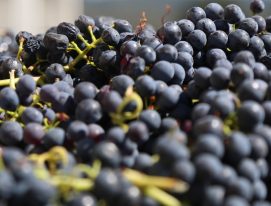Reading an Argentine malbec label is very simple, find out what every term means.
The world of wine is complex and the range of choice in a wine shop or bar can sometimes be overwhelming. Wine labels themselves can be tricky to understand: with all the different designs, regions, grapes, producers and vintages, you’re liable to forget what it is you came in for.
Which is why it’s important to know how to interpret the information available before applying the corkscrew. Every country has its own legislation regarding labelling but here we offer a guide to help you read an Argentine Malbec label with confidence.
Legal aspects for Malbec label
Although Argentina boasts some of the most innovative and original label designs in the world, it’s important to know that they must all be approved by the National Viticultural Institute (INV), the official body responsible for oversight of the wine industry in Argentina.
Wineries must justify the information they supply to consumers to the INV to make sure that it corresponds to the content of the bottle. While the organization doesn’t interfere with the design, it does insist on legal aspects such as the warnings (‘Drink in moderation’, the prohibition on selling alcohol to legal minors, sulfite content) required by different markets.
Other legal requirements include information about the producer and analytical data establishing the wine’s suitability for sale.
Finally, wine bottles must bear the official seal or slogan ‘Vino Argentino Bebida Nacional’ (Wine, the National Drink of Argentina).
Is it Malbec?
Like every New World producer, Argentine wineries generally state the grape variety or blend composition on their labels. So, if the label reads ‘Malbec’ then at least 85% will be made from that grape. If no grape accounts for 85% of the whole, then it is a blend and will be indicated as such using that term or corte, mezcla, assemblage or coupage.
Here it’s worth checking a Malbec you’ve particularly liked: they often have a dash of another grape such as Cabernet Franc or Bonarda, which can add some very pleasant touches while preserving the basic character of the Malbec.
Where is the wine from?
Things get more complicated when we get to place of origin. While most people are familiar with the major wine-producing regions, these days wineries are looking to be ever more precise about their terroirs and micro-terroirs.
Argentina applies the 85% standard here too: a wine that names its place of origin must be at least 85% made from grapes from that region.
The system then narrows things down progressively from the general to the specific. Grapes from different areas can be mixed together but in that case the geographical unit named must contain all the vineyards within its boundaries.
For example, Agrelo and Perdriel are two districts in Luján de Cuyo, Mendoza. A wine made with grapes from both these areas can be identified as being from Luján de Cuyo or Mendoza, but not solely Agrelo or Perdriel.
If the label of the Malbec you’ve bought names a specific region accompanied by the term ‘Indicación Geográfica’ (Geographic Indication), it means that the wine will reflect the character of that region.
Argentina currently has 101 Geographic Indications approved and in force while of the authorized Denominations of Origin only Luján de Cuyo is used by a small group of producers for its Malbec. This legislation is only aimed at protecting the origin of the fruits and does not establish guidelines or obligatory practices for the winemaking process itself.
What kind of Malbec is it?
All manner of different wines are available in Argentina, and they’re made using hundreds of authorized winemaking grapes and techniques. However, some of the terms used on the label are defined by legislation that must be followed by wineries.
For instance, across the world, certain terms have different meanings related to barrel ageing or contact with oak, and in Argentina they’re defined by specific legal parameters.
If you see the word ROBLE (oak) that means that the wine attained its woody flavours using alternative methods and not in barrels. But if the label states RESERVA (Reserve) it means that the Malbec spent at least 12 months in barrels (six months for whites) and if it says GRAN RESERVA (Grand Reserve) the minimum is twenty-four months for reds and twelve for whites.
And there you have it: a guide to interpreting the terms on a Malbec label, so you’ll never feel lost again.



